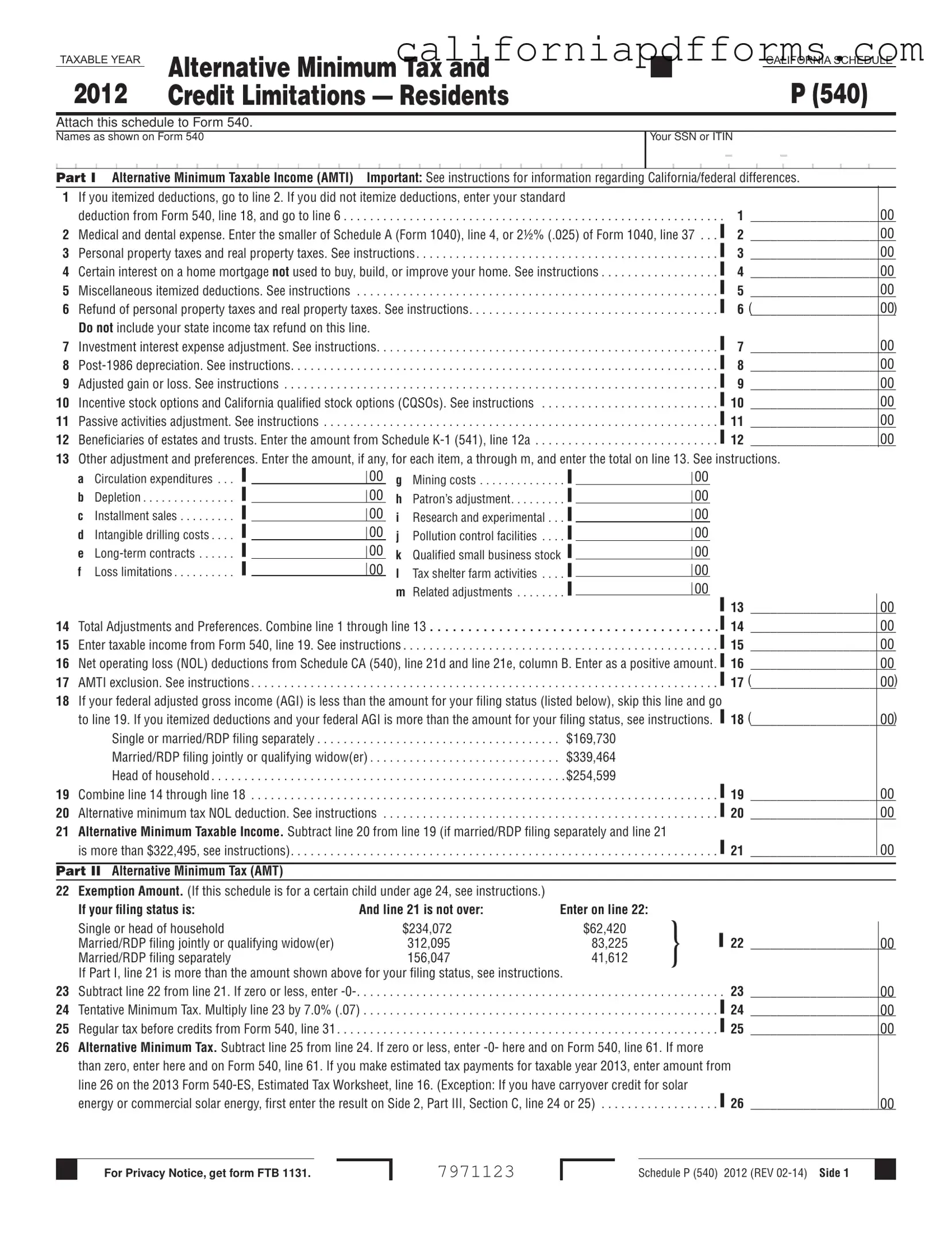Misconception 1: The California 540 Schedule P form is only for high-income earners.
This is not true. While the form is associated with the Alternative Minimum Tax (AMT), it applies to various income levels. Anyone who has to calculate AMTI may need to use this form, regardless of their income bracket.
Misconception 2: You can skip the Schedule P if you do not owe AMT.
Many people believe they can avoid filling out Schedule P if they think they won’t owe AMT. However, it’s essential to complete the form to determine your AMTI accurately. This ensures compliance and helps you understand your tax situation better.
Misconception 3: The form is the same as the federal AMT form.
While both forms deal with AMT, they are not identical. California has its own rules and adjustments that differ from federal guidelines. It’s crucial to follow the specific instructions for the California 540 Schedule P form to avoid errors.
Misconception 4: You don’t need to file Schedule P if you take the standard deduction.
Even if you take the standard deduction, you may still need to complete Schedule P. If your income level requires it, you must report your AMTI, which can include various adjustments and preferences, regardless of your deduction choice.
